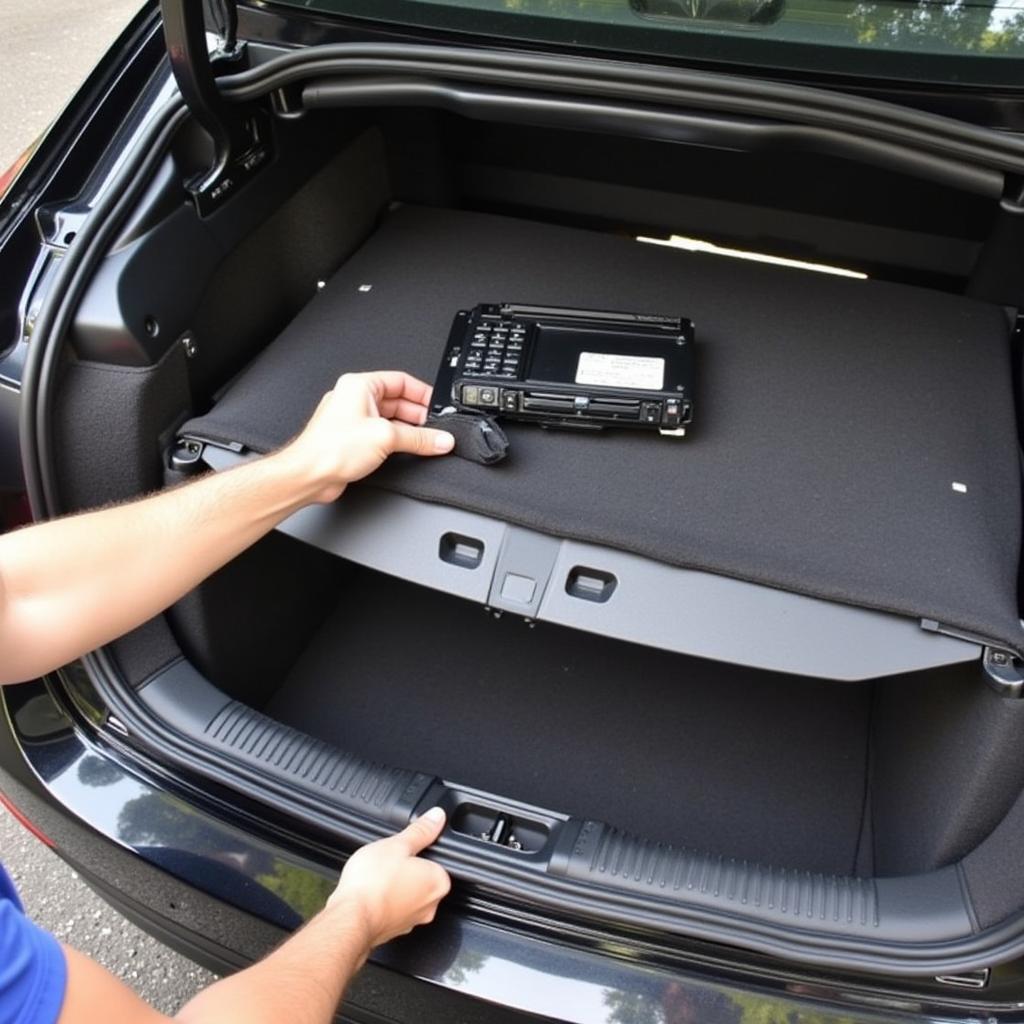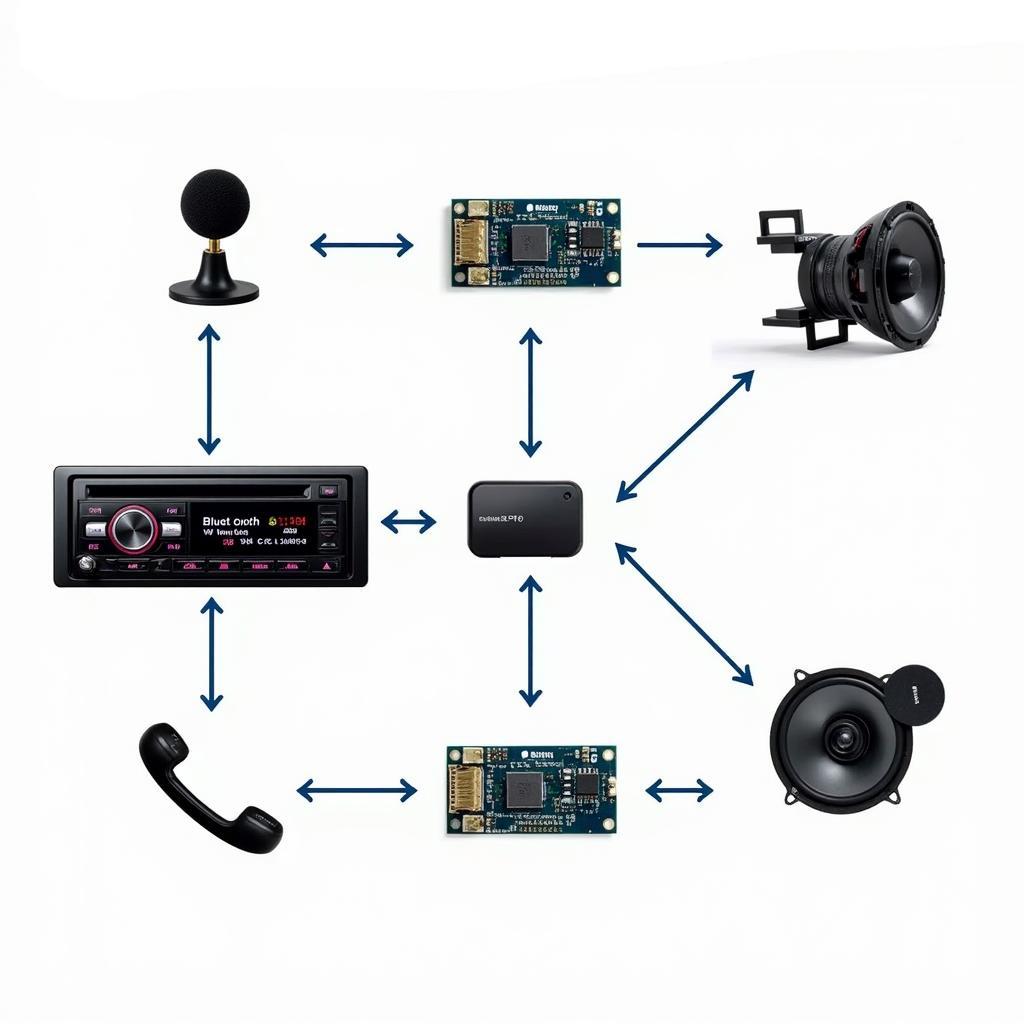Understanding your BMW E30’s audio wiring is crucial for any car audio enthusiast, mechanic, or even the average owner looking to upgrade their sound system. This guide provides a comprehensive overview of the BMW E30 audio wiring, covering common issues, solutions, and best practices.
Decoding the BMW E30 Audio Wiring Diagram
The BMW E30, a classic and beloved model, often presents unique challenges when it comes to audio upgrades. The factory wiring can be confusing, especially for those unfamiliar with older BMW systems. A clear understanding of the wiring diagram is essential before undertaking any modifications. This involves identifying the power, ground, speaker, and amplifier wires. Incorrect wiring can lead to blown fuses, damaged components, and a less-than-optimal sound experience.
One common issue encountered is the age and deterioration of the original wiring. Over time, the insulation can crack and crumble, leading to shorts and other electrical problems. This is particularly true in areas exposed to the elements, such as near the doors and under the dashboard. Replacing these sections with high-quality automotive-grade wiring is crucial for both safety and sound quality.
Another aspect to consider is the different audio systems offered in the E30, ranging from the basic system to the premium sound option. Each system has its own specific wiring configuration, so it’s vital to identify the exact system installed in your vehicle before making any changes. This information can usually be found on the vehicle’s option sticker or by decoding the VIN.
Common BMW E30 Audio Wiring Problems and Solutions
Several issues can arise with the E30’s audio wiring. A frequent problem is static or crackling sounds coming from the speakers. This can be caused by loose connections, damaged wiring, or a faulty head unit. Checking all connections and replacing any damaged wiring is the first step in troubleshooting this issue.
Another common problem is a complete loss of sound. This could be due to a blown fuse, a malfunctioning amplifier, or a problem with the head unit itself. Checking the fuses is a quick and easy starting point. If the fuses are good, further diagnosis is required to pinpoint the source of the problem.
Sometimes, owners experience issues with the fader or balance controls not working correctly. This usually indicates a problem with the wiring to the speakers or the head unit’s internal circuitry. Testing the speaker outputs with a multimeter can help identify the faulty component.
Upgrading Your BMW E30’s Audio System
If you’re looking to upgrade your E30’s audio system, a solid understanding of the wiring is paramount. Modern head units often require additional wiring for features like amplified outputs and subwoofer control. Adapting the existing wiring harness to accommodate these new features requires careful planning and execution. It is often recommended to use a wiring harness adapter designed specifically for the E30 to simplify the installation process. This eliminates the need to cut or modify the original wiring, preserving the car’s value and making it easier to revert to the original system if desired. For example, features like the ones found in the bmw e30 premium sound system might require specific wiring considerations.
“A well-planned audio upgrade can significantly enhance the driving experience in your classic E30,” says renowned automotive electronics expert, Michael Becker, from Becker Automotive Solutions. “However, a thorough understanding of the wiring is crucial for a successful installation and to avoid potential problems down the road.”
Conclusion
The BMW E30’s audio wiring can seem daunting at first, but with a little patience and the right information, it’s manageable. Understanding the wiring diagram, common problems, and proper installation techniques is key to a successful audio upgrade. By following the guidelines in this article, you can enjoy a high-quality sound system in your classic BMW E30. Remember, careful planning and execution are essential when working with any car’s electrical system, including the bmw e30 dash audio system.
FAQs
- What are the most common BMW E30 audio wiring problems? Common problems include static or crackling sounds, complete loss of sound, and malfunctioning fader/balance controls.
- How do I fix a blown fuse in my BMW E30? Locate the fuse box and identify the blown fuse. Replace it with a fuse of the same amperage.
- What tools do I need to work on my E30’s audio wiring? Essential tools include wire strippers, crimpers, a multimeter, and electrical tape.
- Where can I find a BMW E30 wiring diagram? Wiring diagrams can be found online, in repair manuals, and in some automotive parts stores.
- Can I upgrade my E30’s audio system myself? Yes, with the right tools, knowledge, and patience, you can upgrade your E30’s audio system.
- What’s the best way to install a new head unit in my E30? Using a wiring harness adapter designed for the E30 simplifies the installation process and avoids modifying the original wiring. Consider how other BMW systems work, like the bmw e30 trunk audio system, for inspiration.
- What should I do if my E30’s speakers aren’t working? Start by checking the fuses, then check the wiring connections and the head unit.
When you need help, contact us via WhatsApp: +1 (641) 206-8880, Email: [email protected] Or visit our address: 276 Reock St, City of Orange, NJ 07050, United States. We have a 24/7 customer service team. We’ve also written about different aspects of the BMW sound system, like the bmw car alarm sound and the bmw best sound system, which you might find helpful.



